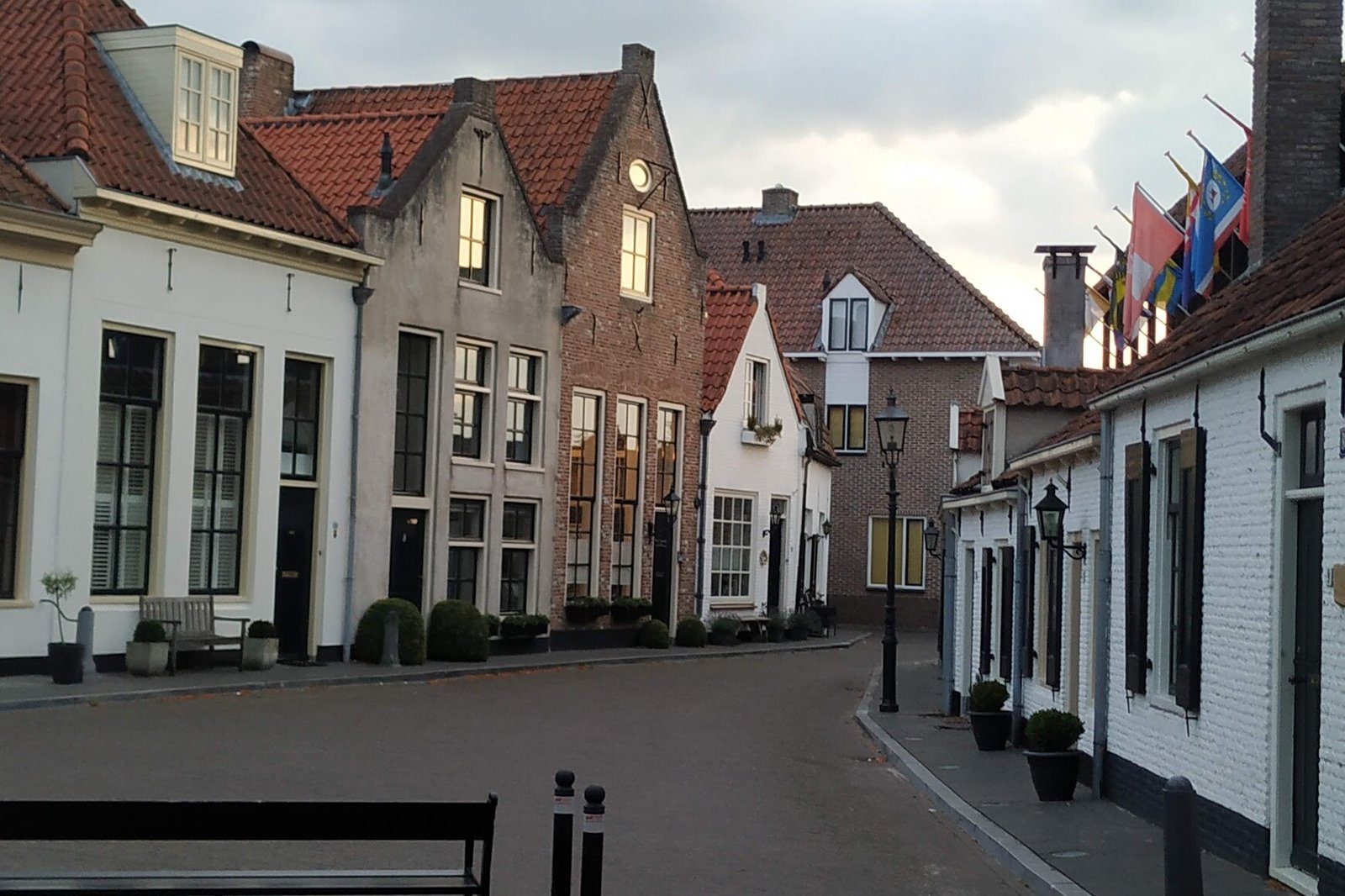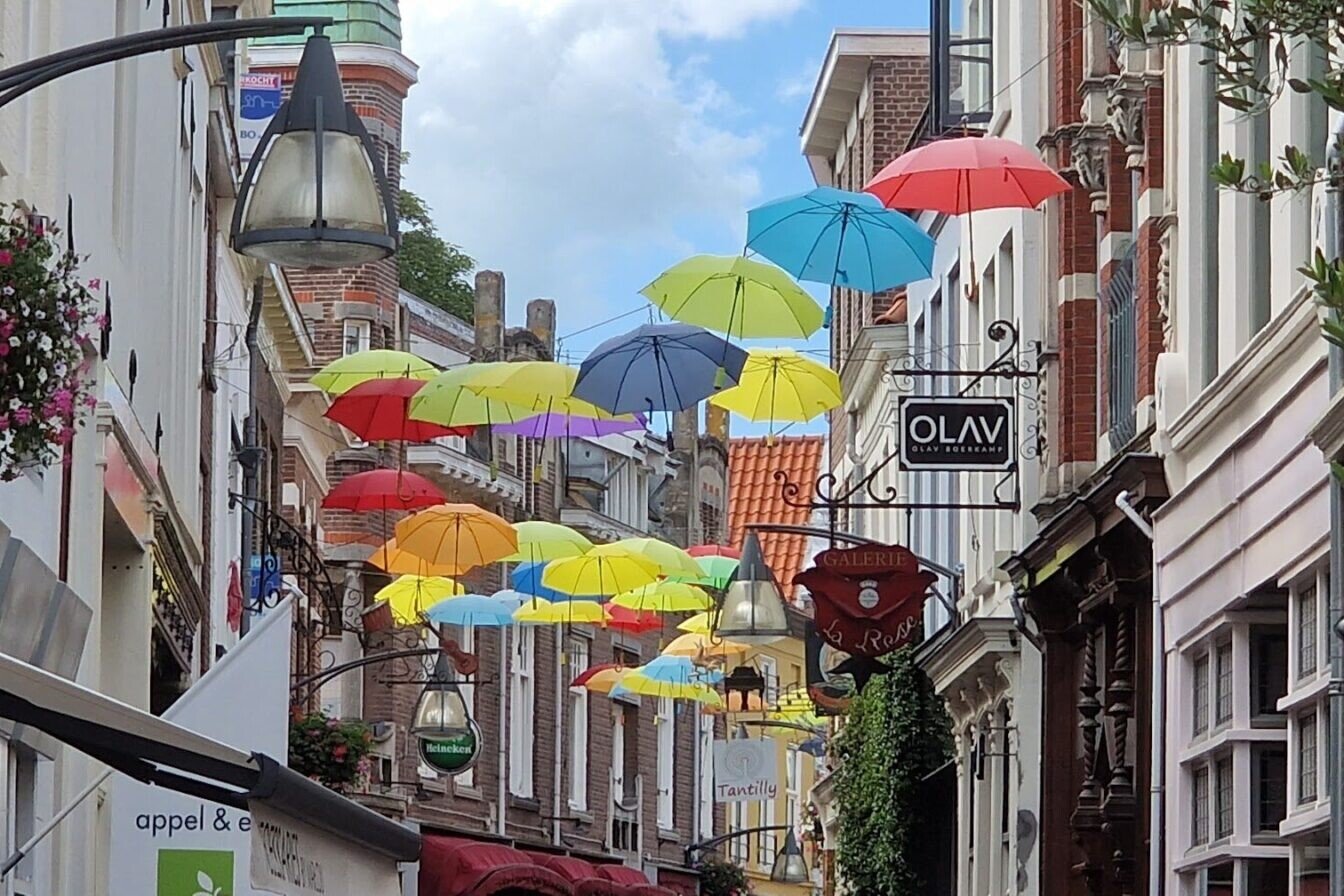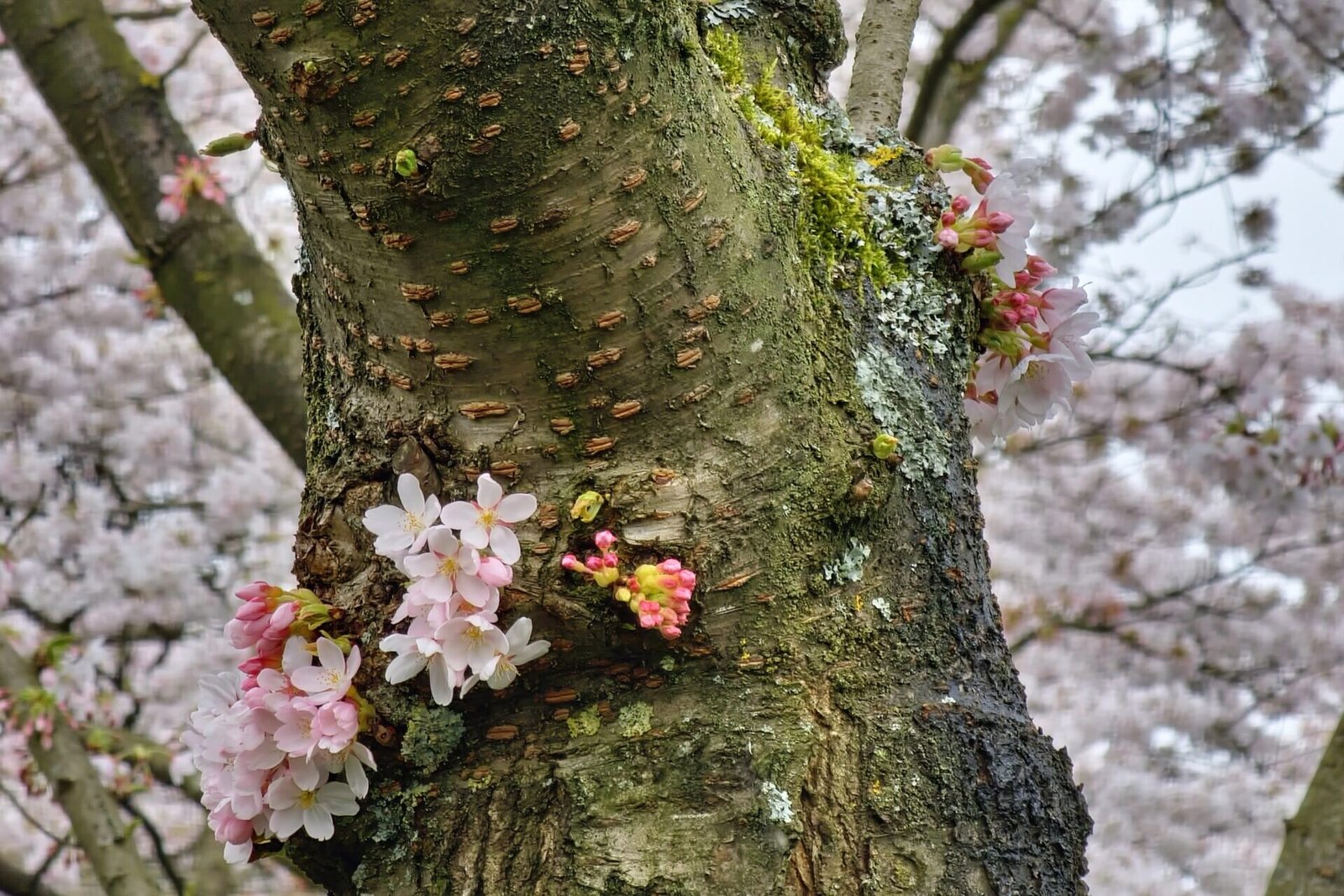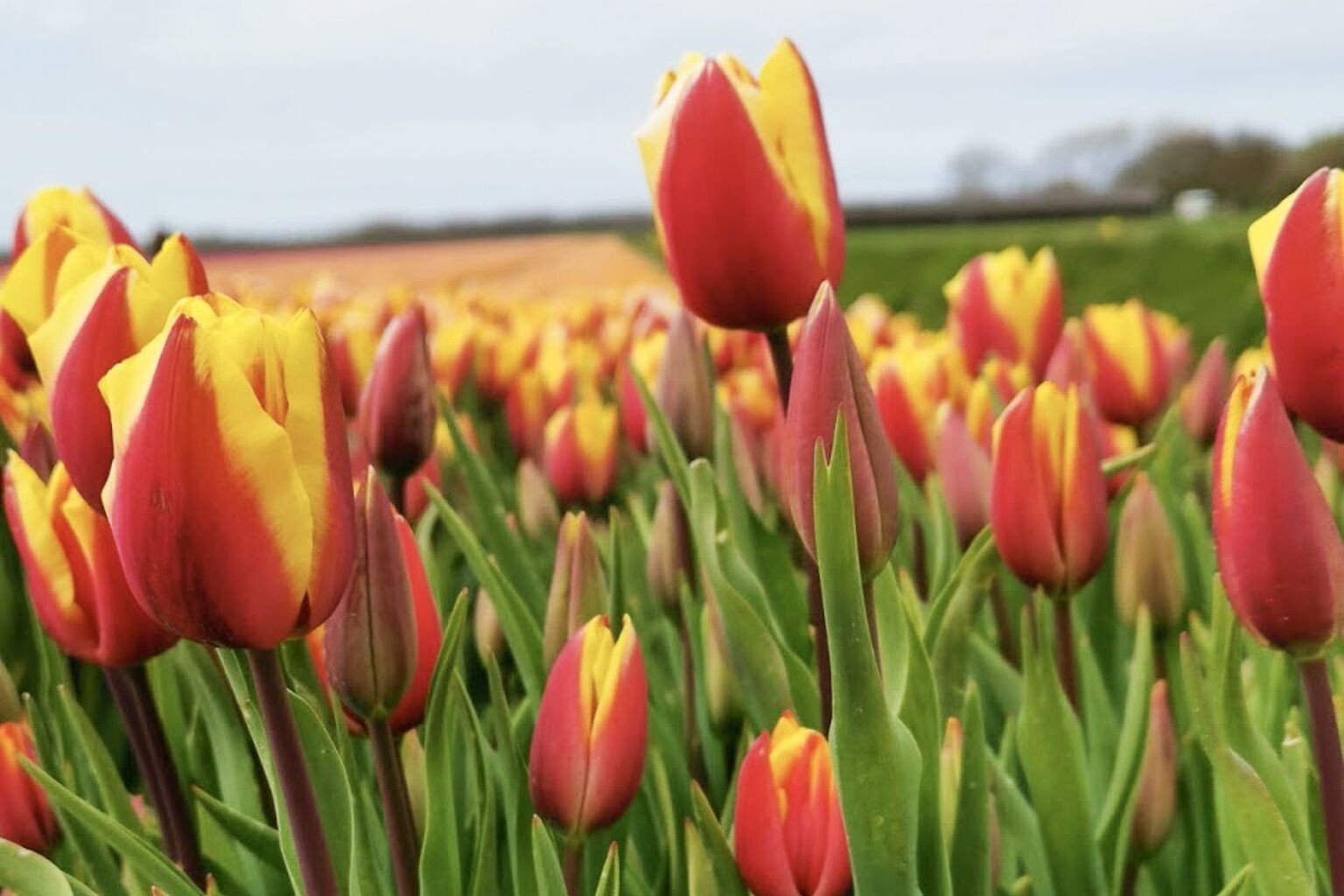If you’re planning a trip to the Netherlands and looking for off-the-beaten-path places, you should not miss the chance to explore the country’s beautiful Hanseatic cities. These cities are known for their rich history, lovely architecture, and charming atmosphere.
In this article, we will explore the Hanseatic cities in the Netherlands, each with unique character and charm. We aim to inspire you and help you plan a trip that uncovers these hidden gems. We hope this gets you curious and ready to plan your next trip to the Netherlands!
Disclosure: Some of the links in this post may be affiliate links. If you decide to book through these particular links, we will receive a small commission from your purchase at no extra cost to you. We are truly grateful for your support!
Historical Significance of the Hanseatic League
The Hanseatic League was a medieval commercial and defensive confederation of market towns and merchant guilds in Central and Northern Europe. It was founded in the 12th century and grew rapidly in the 13th – 14th centuries. At its peak, the League had over 200 member cities across seven modern-day countries.
The League played an essential role in the development of trade and commerce in Europe during the Middle Ages. By facilitating the exchange of goods and ideas between different areas, leading to the growth of cities and the rise of new economic centers. The League also played an important role in expanding international trade and diplomacy and shaping European politics and culture.
Hanseatic Cities in the Netherlands
The Hanseatic League was particularly important in the Netherlands, where it significantly impacted the development of trade and commerce, playing a crucial role in the Dutch economy.
To understand the significance of Hanseatic cities in the Netherlands, it is important to look at their geographic locations. Several Dutch Hanseatic cities are located along the shores of the former Zuiderzee, today the Veluwemeer (the Veluwe Lake) today, that connects to the Ijsselmeer (the Ijssel Lake). Other cities are located along the Ijssel River and its branches, which runs through central and eastern Netherlands.
The IJssel River was a vital trade route during medieval times, connecting the Dutch Hanseatic cities to the North Sea and the rest of Europe. This made it an ideal location for trade and commerce routes, allowing the Hanseatic League to flourish in this region.
The Kogge, or cog, was a type of ship that was used for trade during the medieval period. With its wide and flat bottom, the cog was designed to carry a significant amount of goods while navigating shallow waters. This innovative design allowed cities in the Netherlands and across Europe to expand their trading networks, contributing significantly to the economic prosperity experienced during the Hanseatic League’s peak.
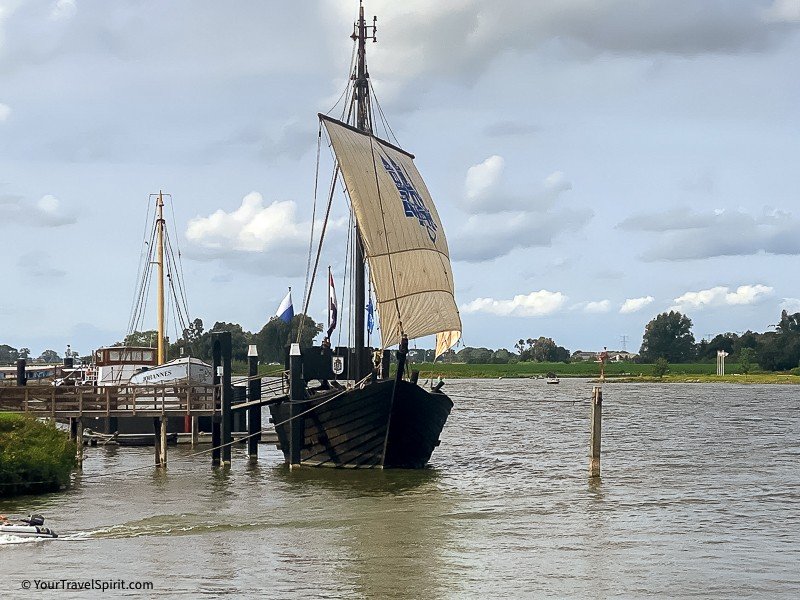
Back in the medieval period, there were 22 Hanseatic cities in the Netherlands.
Today, the cities of Deventer, Zwolle, Kampen, Harderwijk, Elburg, Zutphen, Hattem, and Hasselt are known as the Ijssel Dutch Hanseatic cities. Those cities, located along or near the IJssel River, are real hidden gems that provide a glimpse into the rich heritage of the country.
Here is a map of those cities:
Hattem
Hattem is located between the Veluwe forests and the IJssel river. Its rich history is still visible in the monuments, medieval streets, and fortress walls. You can easily explore by foot the historical city center and its well-preserved buildings, including the Great Church and the Dijkpoort gate. Modern Hattem has a lot to offer as well, with its charming shops, cafes, and restaurants.
One of the interesting attractions in Hattem is the Anton Pieck Museum. This Dutch painter and illustrator is known for his nostalgic illustrations of traditional Dutch villages. The museum showcases a vast collection of his work, including paintings, drawings, and tools that he used for his artwork. https://www.antonpieckmuseum.nl/tentoonstellingen/vaste-tentoonstelling/
Hattem is surrounded by beautiful nature. The nearby Veluwe forests offer endless opportunities for hiking, biking, and horseback riding.
Harderwijk

If you’re looking for a city with a mix of history, culture, good atmosphere, and natural beauty, then Harderwijk is the perfect destination. This Hanseatic city is located on the edge of the Veluwe forest and has a rich fishing tradition that dates back centuries. Its beautiful location on Veluwemeer’s (Veluwe Lake) shores and well-preserved historical center make it a popular tourist destination for locals.
In the streets of the old center and along the waterfront in the marina, you will find many cafes, restaurants, and cute shops.
Harderwijk is known for its fishing tradition, and you can still see evidence of this today. The city’s harbor is home to a number of fishing boats, as well as several yachts.
There are a number of local festivals that take place throughout the year. One of the most popular is the Aaltjesdagen, a three-day festival celebrating the city’s fishing heritage. During the festival, you can enjoy live music, food, and drinks and watch traditional fishing demonstrations. The next festival is planned for June 7th-9th in 2024 (See more information at https://www.aaltjesdagen.nl/#Aaltjesdagenbegint).
Overall, Harderwijk is a beautiful and historic city that is definitely worth a visit, whether you’re interested in learning about the city’s history or just want to enjoy some of the local relaxed atmosphere.
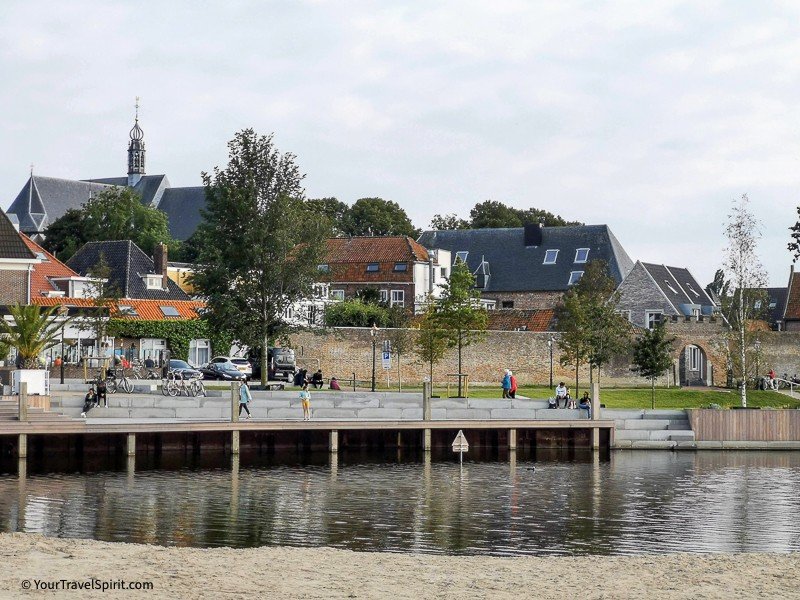
Reference: See our post about Harderwijk.
Zwolle
Zwolle is the biggest city in the region of Overijssel. This charming city is located on the banks of the river IJssel. It is also a university city, with a large student population that brings a lively and vibrant atmosphere to the city.
One of the main attractions in Zwolle is its well-preserved medieval old center. Here you can find beautiful historical buildings, such as the Sassenpoort (Saxon Gate) and Grote Kerk (Great Church). The old town also has many lovely cafes, restaurants, and small shops, and it is perfect for a leisurely stroll.
Beside its historical charm, Zwolle has several art galleries and museums. The most famous of them is Museum de Fundatie that is considered as one of the finest museums in the Netherlands. There are also many festivals and events that take place in the city throughout the year, as well as a lively student nightlife scene with many bars and clubs.
If you are a nature lover, Zwolle also offers many parks and green spaces to explore, such as the beautiful Park Eekhout and Wezenlandenpark. You can take a relaxing walk or have a picnic in these peaceful surroundings.
Zwolle is easily accessible by train, making it an ideal day trip destination.
Overall, Zwolle is a picturesque city that offers a perfect blend of history, culture, and lively atmosphere.
Deventer
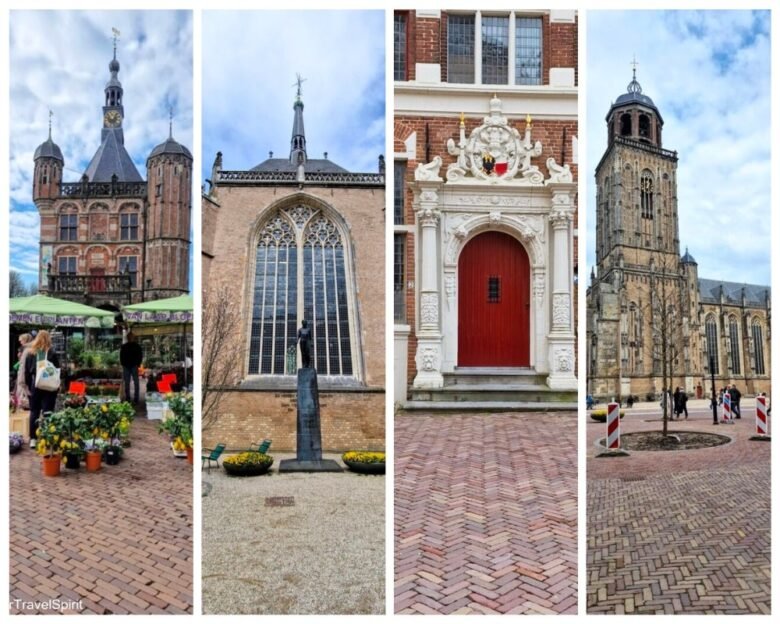
Deventer is a charming Hanseatic city located in the province of Overijssel, known for its rich history and cultural events. Deventer is indeed one of our favorite places to visit in the Netherlands. If you can visit only one Hanseatic city in the Netherlands, we totally recommend Deventer.
Here are some of the things that make Deventer one of the most beautiful Hanseatic cities in the Netherlands.
Charming Old Town
Deventer’s old town is filled with original buildings that date back centuries ago, with the oldest building dating to 1130! Strolling in the old center, you’ll be surrounded by historic houses with decorated gables, impressive churches, and medieval squares. One of the most notable landmarks in Deventer is the Gothic Lebuinuskerk (Lebuinus Church), which can be seen from far away.
Another architectural gem in Deventer is the Waag, a beautiful 16th-century weigh house that has been restored and now is a museum. This impressive, unique building is another symbol of Deventer.
Vibrant, Artistic Atmosphere
Deventer colorful streets are filled with galleries, studios, and workshops, creating a joyful artistic atmosphere. Many bookstores, vintage stores, and cozy cafes and restaurants can be found in Deventer’s streets, contributing to the city’s vibrant and charming atmosphere.
Cultural Events
Deventer is known for its many cultural events that take place throughout the year. One of the most popular events is the annual book market, which attracts thousands of visitors. During the market, the historic town center is transformed into a giant open-air bookshop with booksellers from all over the Netherlands and beyond.
Another popular event is the Dickens Festival, which takes place every December. The festival celebrates the works of Charles Dickens and features actors dressed in period costumes, street performances, and a Christmas market.
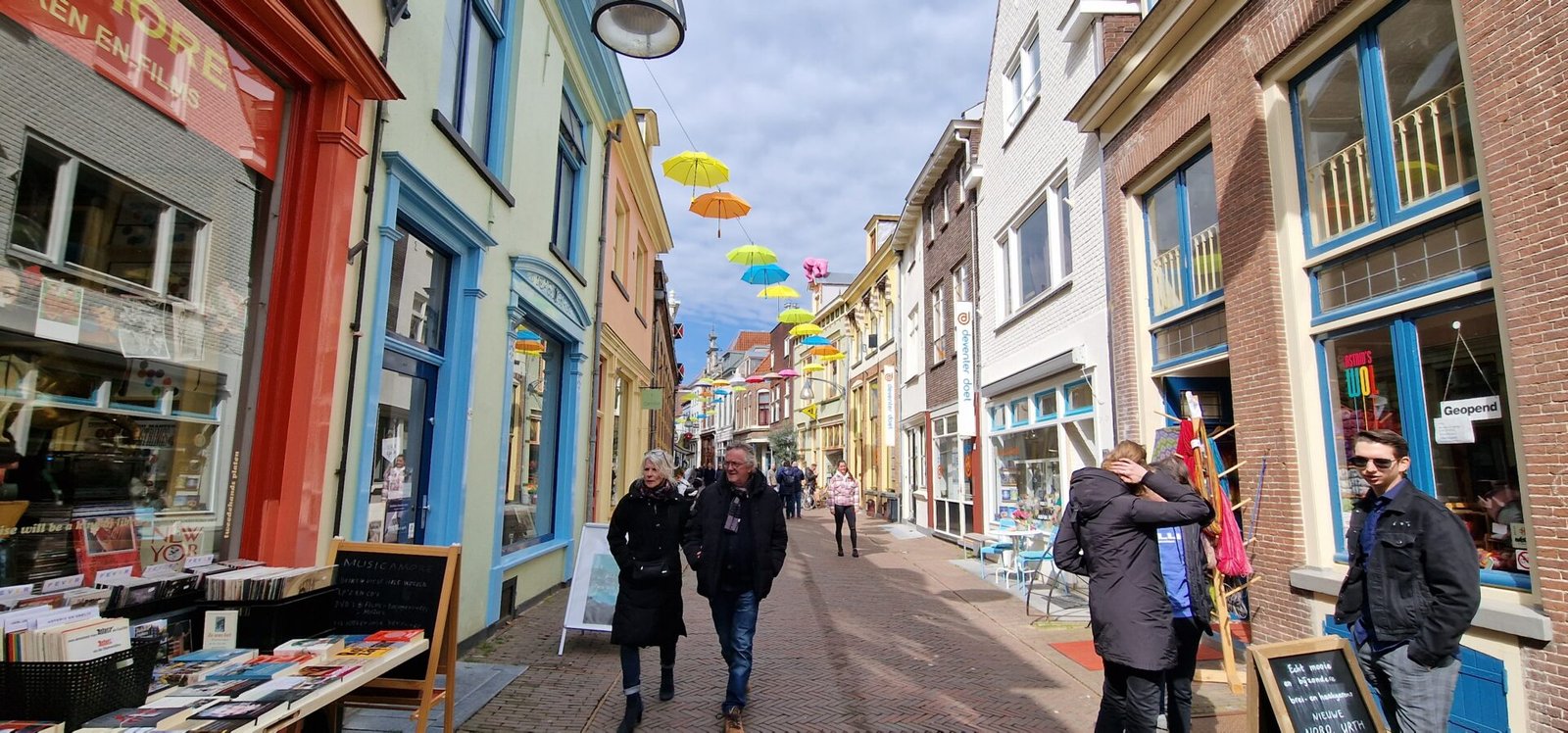
Reference: See our post about Deventer.
Zutphen
Zutphen, located along the IJssel River, is one of the oldest cities in the region. Although founded in the Roman times, it truly blossomed during the 14th century when it joined the Hanseatic League.
Zutphen provides some beautiful architectural gems, such as the Walburgiskerk (St. Walburgis) Church dated back to the 13th century, the Drogenapstoren (Tower), and the famous Librije – a library that started as a public reading room from 1564.
As you stroll along the charming cobblestone streets of Zutphen, you’ll discover little shops, art galleries, and cozy dining spots. It’s the perfect mix of history and modern charm, creating a truly delightful experience.
Kampen

Kampen, located along the IJssel River, was an important trading city during the Middle Ages. Many of its historic buildings can still be seen today. Some of the reasons
Historical Monuments
The city is home to over 500 national monuments, including the iconic Bovenkerk (Upper Church) and the city gates. Kampen is also home to several museums that showcase the city’s history and culture. The Stedelijk Museum Kampen is a must-visit, and it has an impressive collection of art and artifacts from the city’s past.
City Gates
Kampen has well-preserved city gates that date back to the 14th century: Cellebroederspoort, Broederpoort, and Koornmarktspoort. The gates are an impressive sight and provide a glance into the city’s medieval past.
Maritime Heritage
Kampen has a rich maritime heritage, and the city’s harbor was once a trade center of trade. The harbor is still active today, and you can see the traditional Dutch ships anchored there.
One of Kampen’s biggest attractions is its beautiful waterfront, which provides pretty views of the IJssel River. You can take a leisurely stroll along the riverfront or a boat tour along the river and admire the historic buildings and boats passing by.

Reference: See our post about Kampen.
Elburg
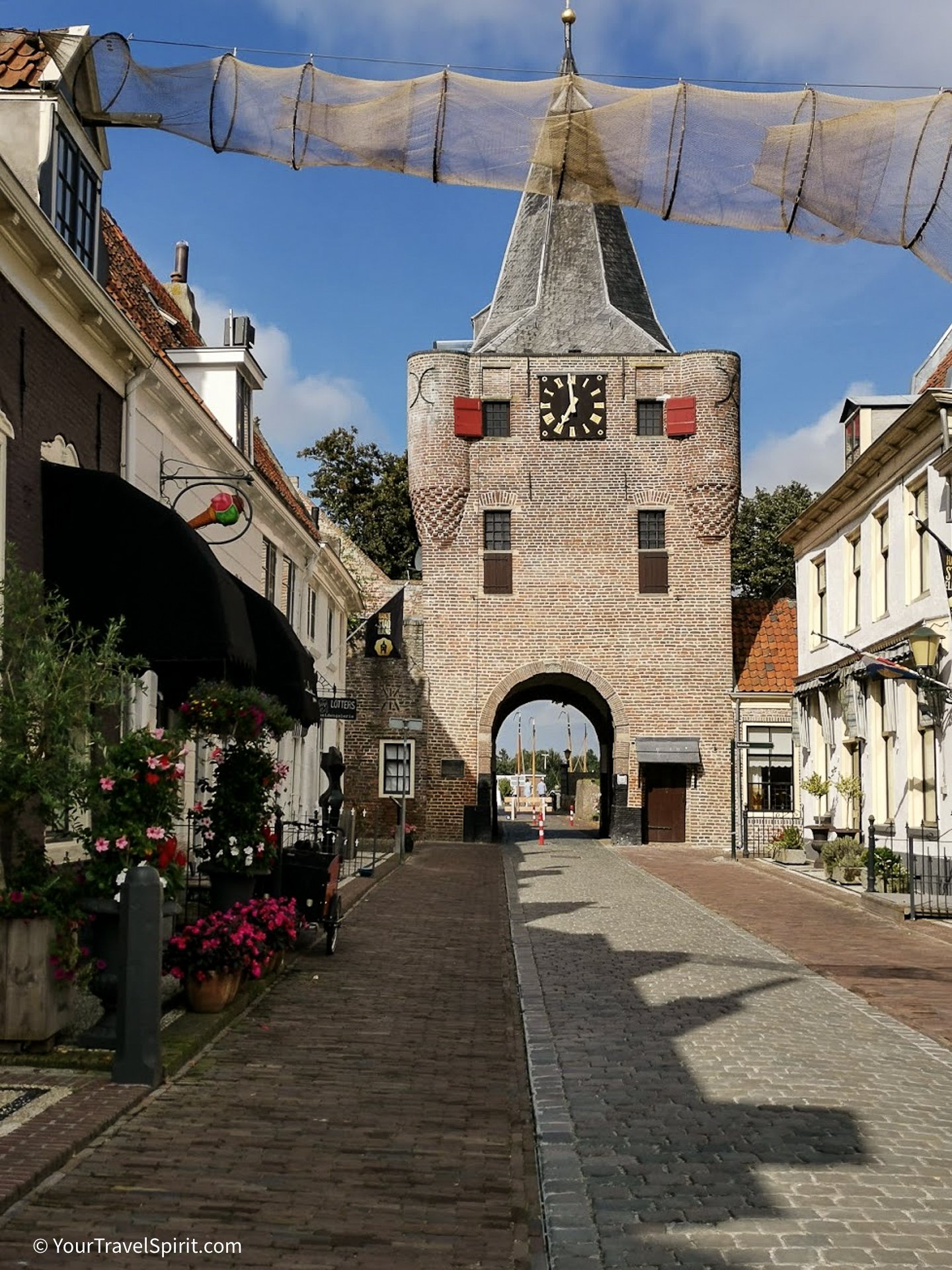
If you’re looking for a picturesque Hanseatic city filled with charm, Elburg should be on your list. Situated along the Veluwe Lake (Veluwemeer), this old town is one of the most lovely Hanseatic cities in The Netherlands. However, Elburg did not evolve like other medieval towns in the area: It originated as a fishing town at the Zuiderzee. After several major floods in the 14th century, the whole town was moved to its current place.
Today, Elburg is a lively city with a small old city center within the walls. It is a wonderful place to enjoy and to discover the lovely medieval atmosphere. It is also a place for water sports enthusiasts.
Elburg is known for its well-preserved historic buildings. One of the most notable buildings is the Vischpoort, which served as the main entrance to the city. You can still see the original wooden doors and the iron bars that were used to protect the city from invaders.
Elburg’s old center is small and can be easily explored on foot. The narrow streets, old houses with traditional Dutch architecture, and quaint little shops create a charming atmosphere. The streets are lined with shops, cafes, and restaurants, so you can take a break and enjoy a cup of coffee or a meal.
In addition, Elburg is surrounded by natural beauty. You can take a stroll along the canal surrounding the old town to enjoy the peaceful scenery.
In conclusion, Elburg is one of the most charming Hanseatic cities in The Netherlands. Its well-preserved historic buildings, beautiful streetscape, and beautiful location make it another favorite destination for us.

Conclusion
In conclusion, the Netherlands is home to some of Europe’s most beautiful Hanseatic cities.
If you plan a trip to the Netherlands and you are looking for off-the-beaten-path places to discover, a Hanseatic city should definitely be on your list. With their beautiful architecture, rich history, and unique charm, they provide an ideal getaway from the regular tourist spots,
See Also
Read about Other Hanseatic Cities in The Netherlands
You can save this guide for later on Pinterest by clicking on the photo below.
Thank you for taking the time to read this! If you have any questions or would like to share your experience, please leave us a comment below.

